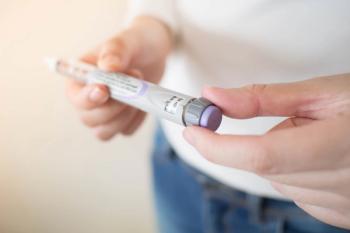
Pharmacy technology 2010
The latest pharmacy technologies include IVR, telepharmacy, cell-phone-based automatic refill reminders, a compact robotic dispenser, remote dispensing, and CPOE pharmacy management.
Key Points
The workhorse technologies that are driving return on investment and freeing pharmacists to perform medication therapy management - including robotics, point-of-sale systems, and pharmacy management systems in retail outlets, and secure narcotics-tracking and bar-code systems in hospitals - have taken firm root in a growing number of pharmacies today.
This year's offerings are ever more sophisticated. They include such diverse products as an advanced voice recognition system for prescription refills, which can encourage medication compliance; a telepharmacy system for real-time pharmacist oversight; an automatic refill system allowing patients to refill prescriptions from their cell phones; and a small compact robotic dispenser for automated dispensing. In the hospital setting, a new software offering aids nursing in medication management, and a computerized physician order entry pharmacy system helps to improve pharmacy operations and increase safety in medication management.
PharmaPhonetics: Interactive voice recognition
The system can do much more. "No one speaks 'touch-tone,' but we all know how to have a conversation," he told Drug Topics. "A well-designed voice-user interface, or VUI, ensures that callers can accomplish their goals simply by answering questions the way they would if they were speaking to a person."
"If you want a prescription refilled, we'd say, 'Your Lipitor will be ready after 12 o'clock.' And the IVR connects with the pharmacy computer workflow system, so the prescription is processed automatically," Mann said.
Statin trial
In a 6-month double-blind trial investigating VoicePort IVR's effectiveness, one group of patients received one IVR call and another group was called regularly. The system motivated patients to keep taking their statins with statements such as "Remember, your doctor has prescribed your medication because of your high cholesterol. Your medication, along with a healthier diet, will help you cut cholesterol."
"Of the people we called during the 6-month period, we saw a 28% jump in adherence over those we called only once," Mann said.
"As we rolled out this product, we realized it can do even more," Mann said. "Let's say you're a diabetic and the system calls you for a medication refill. During that call, the pharmacist can say, 'We have a new glucose meter on sale this week; come on in and find out more.'
"Or the system can go a step further with: 'We have a diabetes clinic every Wednesday. We'd love to have you come and get some counseling. Would you like to set up an appointment?'
"What really boosts the pharmacists' bottom line is that pharmaceutical companies are willing to pay the pharmacy for enrolling patients in clinics."
The system doesn't require a big capital investment, because users don't need to buy a computer and software and interface them with other components.
"You could make 500 calls a day and pay between 18 cents and 30 cents per call. What's more, the VoicePort system tracks down patients either by text or e-mail, or by phoning them; they decide how they want to be reached," Mann said.
Newsletter
Pharmacy practice is always changing. Stay ahead of the curve with the Drug Topics newsletter and get the latest drug information, industry trends, and patient care tips.























































































































